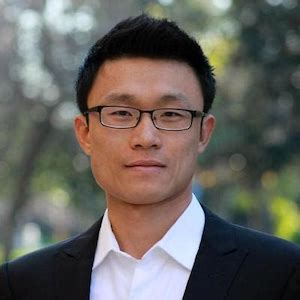 Unfortunately, good code won't speak for itself. Even the most elegantly designed and well-written codebase that solves the most pressing problem in the world won't just get adopted on its own. You, the open source creator, need to speak for your code and breathe life into your creation. That's where technical writing and documentation come in. A project's documentation gets the most amount of traffic, by far. It's the place where people decide whether to continue learning about your project or move on. Thus, spending time and energy on documentation and technical writing, focusing on the most important section, "Getting Started," will do wonders for your project's traction.
Unfortunately, good code won't speak for itself. Even the most elegantly designed and well-written codebase that solves the most pressing problem in the world won't just get adopted on its own. You, the open source creator, need to speak for your code and breathe life into your creation. That's where technical writing and documentation come in. A project's documentation gets the most amount of traffic, by far. It's the place where people decide whether to continue learning about your project or move on. Thus, spending time and energy on documentation and technical writing, focusing on the most important section, "Getting Started," will do wonders for your project's traction.
Opensource.com
See the following -
How to Use Content Marketing To Promote Open Source Projects
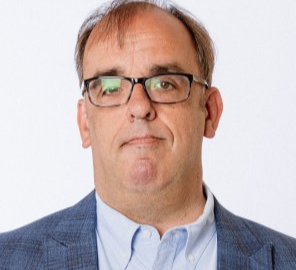 Both startups and more established firms are increasingly turning to content marketing as a way of reaching prospective customers. However, corporate marketers often consider the open source software (OSS) community a challenge to reach. This article features ways your technology and content marketing teams can work together to target and reach the community around an OSS project your organization supports.
Both startups and more established firms are increasingly turning to content marketing as a way of reaching prospective customers. However, corporate marketers often consider the open source software (OSS) community a challenge to reach. This article features ways your technology and content marketing teams can work together to target and reach the community around an OSS project your organization supports.
- Login to post comments
How To Write Effective Documentation For Your Open Source Project
- Login to post comments
How Upstream Contributions Power Scientific Research
 Just as with software development, research under Horizon Europe promotes the adoption of sharing research outputs as early and widely as possible to citizen science, developing new indicators for evaluation research, and rewarding researchers. Horizon Europe emphasizes open science and open source technology. The program evolved from Horizon 2020, which provided financial support for research projects that promoted industrial competitiveness, advanced scientific excellence, or solved social challenges through the process of "open science." Open science is an approach to the scientific process based on open cooperative work, tools, and diffusing knowledge found in the Horizon Europe Regulation and Model Grant Agreement. This open science approach aligns with open source principles that provide a structure for such cooperation.
Just as with software development, research under Horizon Europe promotes the adoption of sharing research outputs as early and widely as possible to citizen science, developing new indicators for evaluation research, and rewarding researchers. Horizon Europe emphasizes open science and open source technology. The program evolved from Horizon 2020, which provided financial support for research projects that promoted industrial competitiveness, advanced scientific excellence, or solved social challenges through the process of "open science." Open science is an approach to the scientific process based on open cooperative work, tools, and diffusing knowledge found in the Horizon Europe Regulation and Model Grant Agreement. This open science approach aligns with open source principles that provide a structure for such cooperation.
- Login to post comments
How We Track The Community Health Of Our Open Source Project
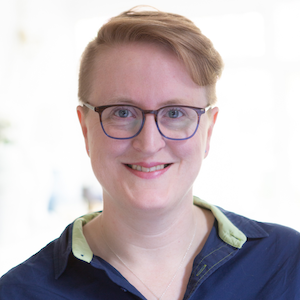 To be an effective leader in an open source community, you need a lot of information. How do I know who the most active members in my community are? Which companies are making the most contributions? Which contributors are drifting away and becoming inactive? Who in the community is knowledgeable about a specific topic? These were just a few of the questions I had when I started leading the Mautic community at Acquia. But the problem was not a shortage of information. On the contrary, there were so many places our community interacted and so many things to track that I was drowning in data. I could access plenty of data sources, but they were not helping me manage the community effectively or answering my questions.
To be an effective leader in an open source community, you need a lot of information. How do I know who the most active members in my community are? Which companies are making the most contributions? Which contributors are drifting away and becoming inactive? Who in the community is knowledgeable about a specific topic? These were just a few of the questions I had when I started leading the Mautic community at Acquia. But the problem was not a shortage of information. On the contrary, there were so many places our community interacted and so many things to track that I was drowning in data. I could access plenty of data sources, but they were not helping me manage the community effectively or answering my questions.
- Login to post comments
Improve Open Source Community Sustainability By Tracking These Two Metrics
 In early 2020, I wrote an article on three metrics for tracking and measuring offline, in-person community-building activities. Little did I (or the world) know then that offline, in-person activities of any kind would soon become unfeasible for the foreseeable future. So, I started thinking: With open source projects being online by default, and with everything else moving online and virtual, what should creators of open source technologies measure as we continue in this COVID and (hopefully soon) post-COVID world? There are plenty of metrics you can track—stars, forks, pull requests (PRs), merge requests (MRs), contributor counts, etc.—but more data doesn't necessarily mean clearer insights. I've previously shared my skepticism about the value of these surface-level metrics, especially when assessing an open source project's health and sustainability. In this article, I propose two second-order metrics to track, measure, and continually optimize to build a strong, self-sustaining open source community...
In early 2020, I wrote an article on three metrics for tracking and measuring offline, in-person community-building activities. Little did I (or the world) know then that offline, in-person activities of any kind would soon become unfeasible for the foreseeable future. So, I started thinking: With open source projects being online by default, and with everything else moving online and virtual, what should creators of open source technologies measure as we continue in this COVID and (hopefully soon) post-COVID world? There are plenty of metrics you can track—stars, forks, pull requests (PRs), merge requests (MRs), contributor counts, etc.—but more data doesn't necessarily mean clearer insights. I've previously shared my skepticism about the value of these surface-level metrics, especially when assessing an open source project's health and sustainability. In this article, I propose two second-order metrics to track, measure, and continually optimize to build a strong, self-sustaining open source community...
- Login to post comments
Interview With Free Software Foundation Executive Director Zoë Kooyman
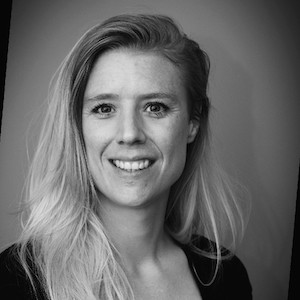 The Free Software Foundation (FSF) started promoting the idea of sharing code way back in 1985, and since then it's defended the rights of computer users and developers. The FSF says that the terms "open" and "closed" are not effective words when classifying software, and instead considers programs either freedom-respecting ("free" or "libre") or freedom-trampling ("non-free" or "proprietary"). Whatever terminology you use, the imperative is that computers must belong, part and parcel, to the users, and not to the corporations that owns the software the computers run. This is why the GNU Project, and the Linux kernel, Freedesktop.org, and so many other open source projects are so important.
The Free Software Foundation (FSF) started promoting the idea of sharing code way back in 1985, and since then it's defended the rights of computer users and developers. The FSF says that the terms "open" and "closed" are not effective words when classifying software, and instead considers programs either freedom-respecting ("free" or "libre") or freedom-trampling ("non-free" or "proprietary"). Whatever terminology you use, the imperative is that computers must belong, part and parcel, to the users, and not to the corporations that owns the software the computers run. This is why the GNU Project, and the Linux kernel, Freedesktop.org, and so many other open source projects are so important.
- Login to post comments
Interview with Stefano Maffulli First Executive Director of the Open Source Initiative
 The Open Source Initiative has served as the key steward of open source software since its formation in 1998. In September 2021, the Open Source Initiative board hired Stefano Maffulli as its first Executive Director. I recently interviewed Stefano to learn more about him and his vision for the Open Source Initiative.
The Open Source Initiative has served as the key steward of open source software since its formation in 1998. In September 2021, the Open Source Initiative board hired Stefano Maffulli as its first Executive Director. I recently interviewed Stefano to learn more about him and his vision for the Open Source Initiative.
- Login to post comments
Is Open Source A Development Model, Business Model, Or Something Else?
 The OSD gives a clear definition of what open source software is, but doesn't provide much insight into how the adoption of open source affects a company's ability to build and deliver products or services that people want and need. Stated another way, there's still tremendous debate about the best ways to build a business based on open source. In this first of a multi-part series, I will lay the groundwork for understanding what products are, what product managers do, and how open source can be considered a supply chain. In future articles, I will go deeper into each of these topics, but I'll start by dissecting some common, but fundamentally confusing vocabulary.
The OSD gives a clear definition of what open source software is, but doesn't provide much insight into how the adoption of open source affects a company's ability to build and deliver products or services that people want and need. Stated another way, there's still tremendous debate about the best ways to build a business based on open source. In this first of a multi-part series, I will lay the groundwork for understanding what products are, what product managers do, and how open source can be considered a supply chain. In future articles, I will go deeper into each of these topics, but I'll start by dissecting some common, but fundamentally confusing vocabulary.
- Login to post comments
Is the Grace Hopper Open Source Day 2015 a Turning Point for Open Health and Humanitarian Open Source Projects?
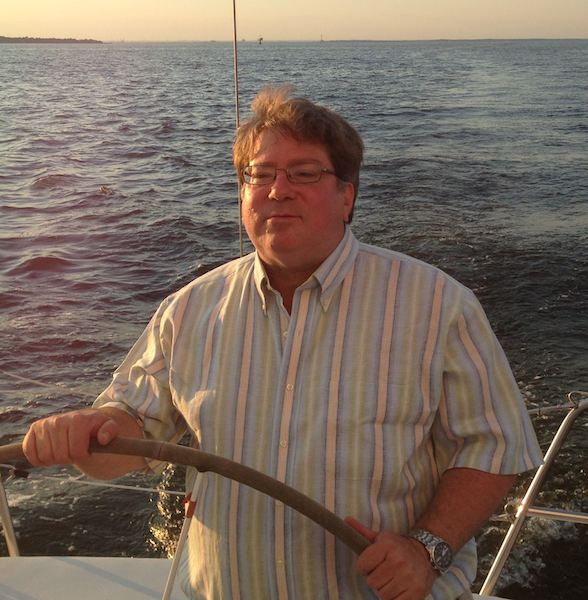 One of the most significant efforts to help open health and humanitarian open source apps seen to date will be taking place tomorrow in Houston, Texas. The event is the Open Source Day 2015, part of the annual Grace Hopper Celebration of Women in Computing (GHC) a conference designed to bring the research and career interests of women in computing to the forefront. The full-day Code-A-Thon is focused on “coding for humanitarian causes in a dynamic, collaborative environment.” This day will give “women from around the world the chance to learn how to contribute to the open source community, regardless of their skill or experience level.”
One of the most significant efforts to help open health and humanitarian open source apps seen to date will be taking place tomorrow in Houston, Texas. The event is the Open Source Day 2015, part of the annual Grace Hopper Celebration of Women in Computing (GHC) a conference designed to bring the research and career interests of women in computing to the forefront. The full-day Code-A-Thon is focused on “coding for humanitarian causes in a dynamic, collaborative environment.” This day will give “women from around the world the chance to learn how to contribute to the open source community, regardless of their skill or experience level.”
- Login to post comments
It's Time To Pay The Maintainers
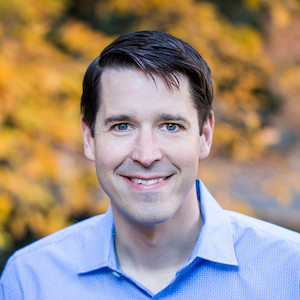 Earlier this year, Tidelift conducted a survey of over 1,200 professional software developers and open source maintainers. We found that 83% of professional software development teams would be willing to pay for better maintenance, security, and licensing assurances around the open source projects they use. Meanwhile, the same survey found that the majority of open source maintainers receive no external funding for their work, and thus struggle to find the time to maintain their open source projects. So, to put what we learned succinctly...It's time to pay the maintainers. Not just because they deserve to be compensated for their amazing work creating the software infrastructure our society relies on (they do!). But also because there is a ready-made market of professional developers willing to pay for assurances they are in the best position to provide. Here's an idea for how to do it...
Earlier this year, Tidelift conducted a survey of over 1,200 professional software developers and open source maintainers. We found that 83% of professional software development teams would be willing to pay for better maintenance, security, and licensing assurances around the open source projects they use. Meanwhile, the same survey found that the majority of open source maintainers receive no external funding for their work, and thus struggle to find the time to maintain their open source projects. So, to put what we learned succinctly...It's time to pay the maintainers. Not just because they deserve to be compensated for their amazing work creating the software infrastructure our society relies on (they do!). But also because there is a ready-made market of professional developers willing to pay for assurances they are in the best position to provide. Here's an idea for how to do it...
- Login to post comments
Lessons In Openness From Japan's "Business Reinvention"
 In The Business Reinvention of Japan, Ulrike Schaede explores Japan's approach to economic development in the late 20th and early 21st century. Her thesis is that this approach-what she calls an "aggregate niche strategy"-offers important lessons for the West by balancing the pursuit of corporate profit with social stability, economic equality, and social responsibility and sustainability. It's also a case study in the power of open organization principles, which come to life in Schaede's account. I would argue that Japan's "aggregate niche strategy" was successful, in part, because of them. In this review, I'll explore Schaede's argument about Japan's economic development in order to demonstrate how open principles played a role in Japan's "reinvention." In this first part, I'll provide some historical, economic context necessary for understanding Schaede's argument. In the next part, I'll explore in more detail the implications of Japan's strategy and the role open principles clearly played in it.
In The Business Reinvention of Japan, Ulrike Schaede explores Japan's approach to economic development in the late 20th and early 21st century. Her thesis is that this approach-what she calls an "aggregate niche strategy"-offers important lessons for the West by balancing the pursuit of corporate profit with social stability, economic equality, and social responsibility and sustainability. It's also a case study in the power of open organization principles, which come to life in Schaede's account. I would argue that Japan's "aggregate niche strategy" was successful, in part, because of them. In this review, I'll explore Schaede's argument about Japan's economic development in order to demonstrate how open principles played a role in Japan's "reinvention." In this first part, I'll provide some historical, economic context necessary for understanding Schaede's argument. In the next part, I'll explore in more detail the implications of Japan's strategy and the role open principles clearly played in it.
- Login to post comments
Louis C.K. and the DIY DVD Experiment
The answer to stabilizing content and price is letting artists retain greater control of their work. Read More »
- Login to post comments
Luis Ibáñez to be Interviewed in vxJourney Program on Thursday
Luis Ibáñez, one of the best known advocates of open source solutions in healthcare will be interviewed Thursday, May 1, by Fabian Lopez in the popular vxJourney weekly webinar. Ibáñez a contributing author to Open Health News as well as other publications, in particular Opensource.com, will talk about the VistA course that he has been teaching at the State University of New York at Albany. Read More »
- The Future Is Open
- Login to post comments
Managing The Open Source Product Roadmap
 Customers, as well as the sales and marketing teams who talk to them, love a roadmap. It gives them a sense of what is realistic and what is not. The roadmap is also at the heart of a product. Maintaining an up-to-date product roadmap keeps the product team focused on the customer and aligned around delivering what they need. The roadmap communicates both the strategic direction for a product and the company's perspective on problem solving.
Customers, as well as the sales and marketing teams who talk to them, love a roadmap. It gives them a sense of what is realistic and what is not. The roadmap is also at the heart of a product. Maintaining an up-to-date product roadmap keeps the product team focused on the customer and aligned around delivering what they need. The roadmap communicates both the strategic direction for a product and the company's perspective on problem solving.
- Login to post comments
Mercy Health Sets Up Drupal and Alfresco for Their Main Portal
Mercy Health supports several hospitals and clinics across many different geographical locations in the US. Each geographical location has historically had its own dedicated intranet site, and these sites were on different technologies and each had a separate support structure. It was determined that a single unified co-worker portal was needed to support the vision of One Mercy, a patient and provider portal. Read More »
- Login to post comments